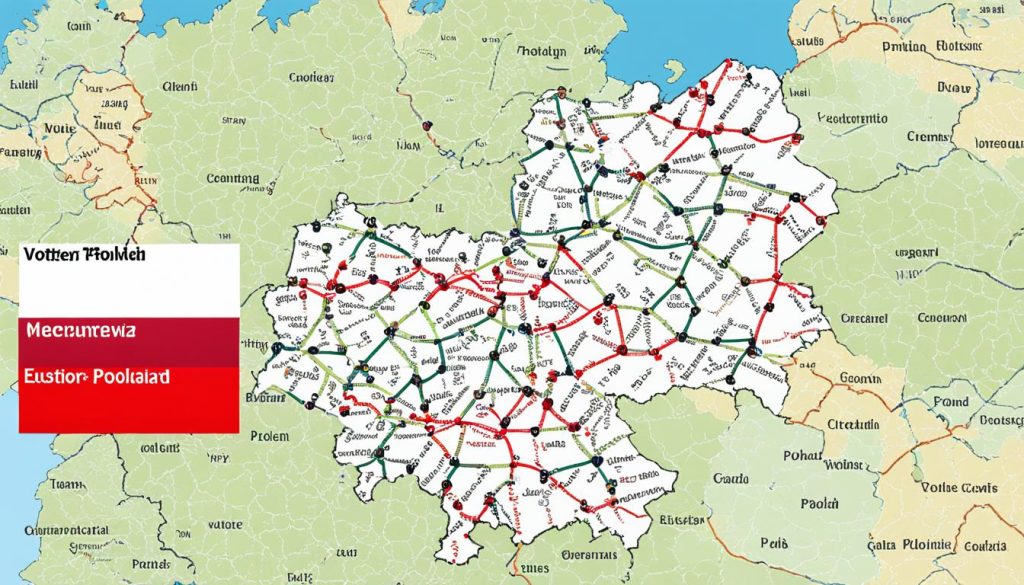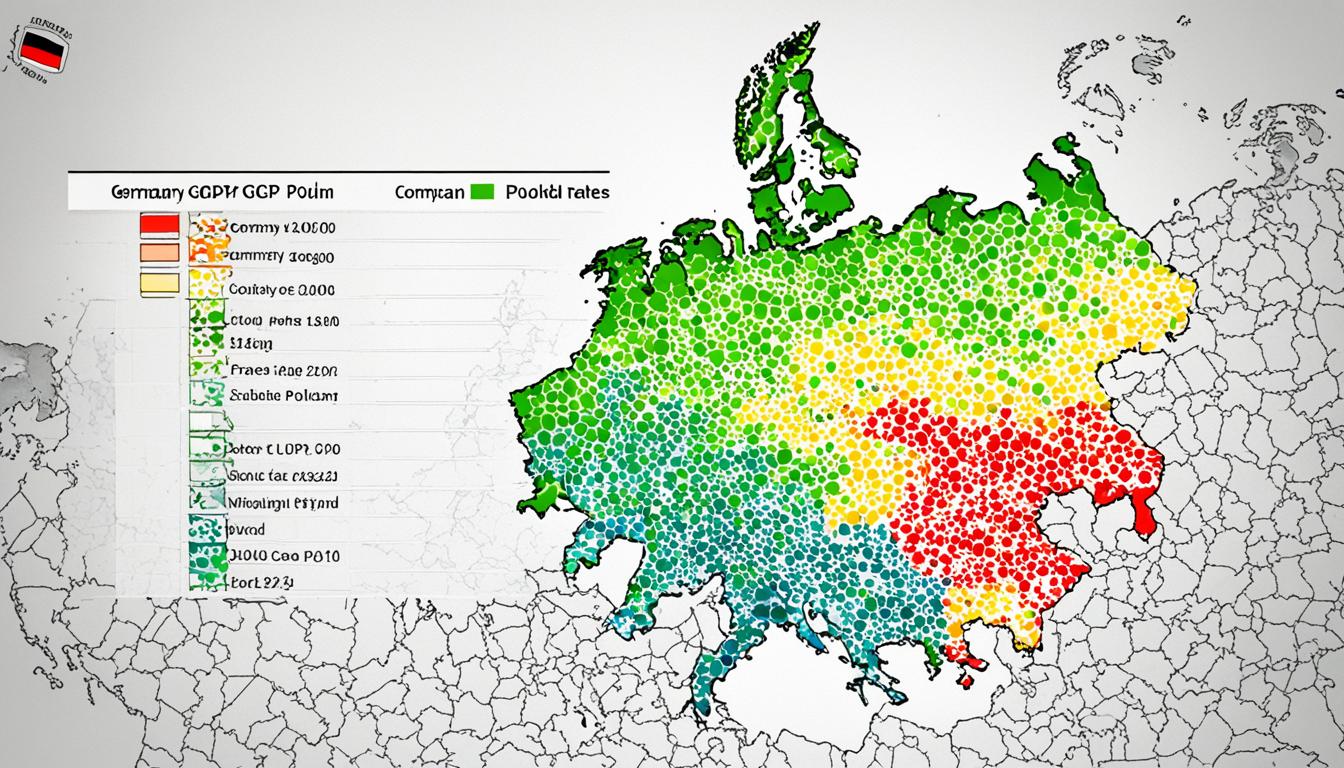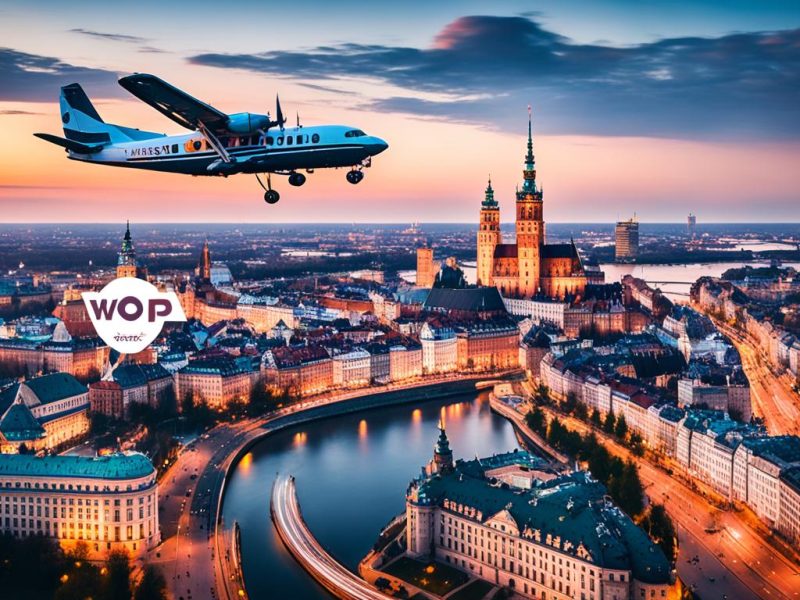Germany and Poland’s relationship is complex but fascinating. Each country has its own importance in Europe’s story. Understanding their economic relations helps us see Europe’s economy in a wider view. But it’s not just about money. Their cultural differences show Europe’s variety.
Looking at their politics makes clear their roles in Europe. Further, exploring their positions on the world stage lets us grasp their influence globally.
Germany and Poland are close but have a unique mix of working together and competing. This article will shed light on their economic strengths, cultural bonds and differences, and their political actions. We will dive into what makes these European countries so interesting.
Key Takeaways
- In-depth examination of Germany-Poland economic comparison
- Insight into the cultural differences shaping societal interactions
- Analysis of the distinct political landscape affecting governance and policy
- Exploration of geopolitical insights to understand international positioning
- Identification of historical contexts informing current relations
Economic Overview and Comparison
The German industry and the Polish economy are key to Europe’s growth. Germany is known for its cars and engineering. Poland is rising in IT and manufacturing. Both show how economies can differ but still push Europe forward.
Key Industries and Economic Drivers
Germany’s economy is built on automotive, engineering, and chemicals. These industries help it trade globally. Poland’s growth comes from IT and manufacturing. These sectors improve its trade relationships.
Comparative Analysis of GDP
Looking at the GDP, Germany and Poland show financial health. Germany has a bigger economy, but both are growing. This shows how they fit into Europe’s economy.
Employment and Unemployment Statistics
Germany and Poland have different job scenes. Germany has lots of jobs, thanks to its training system. Poland is growing but still tackling unemployment. It’s working on better job policies.
Trade Relations and Exports
Trade is crucial for countries. Germany excels in high-quality exports, while Poland focuses on energy and agriculture. Their trade practices help us understand European and global trade dynamics.
The Political Landscape: Key Differences
To grasp the political differences between Germany and Poland, we must look at how they run their affairs. They vary in government setup, voting methods, and how they make laws. Their roles in the EU and on the world stage show how deep these differences run. Their membership in organisations like the EU and NATO influences their foreign policy and teamwork across borders.

Government Structure and Elections
Germany and Poland’s governments are worth exploring. Germany uses a system where its parliament, the Bundestag, chooses the Chancellor. This mixes the powers of making and executing laws. Poland, however, votes for its President directly. This is part of its semi-presidential system, separating the powers of the President and the Prime Minister.
The way they elect officials also stands out. Germany combines direct votes for candidates with party lists to ensure fair representation. Poland prefers a system where parties matter more than single candidates. This affects who gets into its parliament.
International Roles and Alliances
Being part of the EU has shaped Germany and Poland in different ways. Germany is at the forefront of pushing for unity and cooperation in Europe. It also plays a big part in NATO, committed to protecting all members together.
Poland values its EU and NATO memberships but is sometimes careful about joining too quickly. It looks at its past to decide on its current choices. This means Poland often balances its national good with working alongside other countries for defence.
Table: Comparative Overview of International Commitments
| Criteria | Germany | Poland |
|---|---|---|
| EU Membership Influence | Key driver of integration and policy | Supportive yet cautious of extensive integration |
| NATO Contributions | Assertive in collective security measures | Emphasises cohesiveness with national sovereignty |
| International Diplomacy | Advocates for multilateral solutions | Adopts pragmatic approach to diplomacy |
Policy Differences in External Affairs
Germany is known for leading in international relations. It seeks solutions that involve many countries. This shows its commitment to working together globally.
Poland focuses more on keeping control within its borders while working with the EU. Its policies are shaped by its history and location. This sometimes leads to different ways of handling international matters compared to Germany.
Yet, both countries see the value in working together. They actively take part in global talks about migration, security, and the economy. This highlights how they manage their roles and views on the world stage.
Germany vs Poland: Cultural Contrasts and Similarities
When looking at Germany and Poland, we see rich cultural diversity shaped by historical influences and societal values. Both countries share histories but also have unique traits. This mix makes each nation distinct.
Though German and Polish languages are different, both have a strong literary tradition. This has helped shape Western culture. Germany’s Oktoberfest and Poland’s Dyngus Day are examples of how traditions enrich societies. Major historical events, like Germany’s Reformation and Poland’s Solidarity Movement, have also influenced moral values in both countries.
| Cultural Aspect | Germany | Poland |
|---|---|---|
| Folklore and Mythology | Brimming with tales from the Brothers Grimm | Rich in Slavic folklore and legends |
| Festivals | Known for Christmas markets and Karneval | Famous for Easter celebrations and Saint’s Day feasts |
| Culinary Traditions | Diverse with influences from various regions, known for breads, sausages, and beer | Distinct flavours, notable for pierogi, bigos, and vodka |
| Artistic Contributions | Home to classical composers like Beethoven and vibrant Bauhaus architecture | Renowned for Chopin’s music and historic Gothic structures |
| Literary Figures | Writers such as Goethe and Thomas Mann | Poets like Adam Mickiewicz and Wisława Szymborska |
Germany and Poland use commemorations and memorials to deal with their histories. They aim to foster unity. Public holidays and arts in both countries reveal a lot about their values.
Understanding cultural diversity includes looking at education in both countries. Education highlights the value placed on knowledge and innovation. It shapes norms and promotes a love for learning.
The influence of history is clear in the architecture of Germany and Poland. Sites like Berlin’s Brandenburg Gate and Kraków’s Wawel Castle highlight resilience. They show the countries’ cultural identities.
Echoing the words of historian Anne Applebaum, “Each country tells a story about itself not only through its policies but through its culture, its monuments, and its public spaces.”
In summary, German and Polish cultures are both different and shared. Each has its own patterns and traditions. Their diverse cultures enrich Europe and the wider world.
Conclusion
Our study of Germany and Poland has revealed deep insights into their economies, politics, and cultures. We’ve seen Germany’s strong engineering face Poland’s growing IT sector. Their different economic tactics have been notable. This comparison has broadened our understanding of how these countries operate, both in Europe and globally.
The political systems of these nations lead to varied policies. This impacts Germany-Poland relations, showing a mix of cooperation and rivalry. Culturally, their shared history brings them together yet marks their uniqueness. This mix enriches their relationship, making it complex and deeply rooted in the past.
Looking ahead, both countries aim to strengthen their partnership. They want to enhance economic ties, engage in political talks, and share cultures. While competition remains, collaborative efforts are key to a stronger bond in Europe. Germany and Poland are at a crucial point, with a chance to show the world how to unite.
FAQ
What are the key economic differences between Germany and Poland?
Germany is a top world economy, known for cars and engineering. Poland shines in IT and manufacturing. Their main differences lie in GDP, growth, policies, and job markets. This makes their economies quite distinct.
How do the political landscapes of Germany and Poland compare?
Germany runs as a federal parliamentary republic; Poland is a unitary semi-presidential republic. Their roles within the EU and NATO vary widely. This reflects their unique political paths and decisions in world affairs.
Can you outline the main cultural distinctions and similarities between Germany and Poland?
Germany and Poland have their own languages, traditions and social habits. These reflect their separate histories. Yet, they share some cultural traits thanks to their close location and historical links.
What are the implications of Germany and Poland’s respective roles on the global stage?
Germany and Poland hold crucial spots in world affairs, but their approaches and impacts differ. Germany leads in the EU and beyond. Poland has a significant presence in Central and Eastern Europe. Their political choices affect global dynamics in diverse ways.
How do Germany and Poland’s trade relations and exports influence their economies?
Trade is vital to Germany, especially in auto and machine exports. Poland also relies on trading machinery, electronics, and cars. Their economic health is tied to these trade activities and partnerships.
How does the employment landscape differ between Germany and Poland?
Germany boasts a lower joblessness rate and a skilled workforce. It excels in engineering and tech. Poland’s job market faces ups and downs with its evolving economy. It struggles with brain drain amid growth.
In terms of external affairs, how do the policies of Germany and Poland differ?
Germany values EU unity, global cooperation, and accountability. Poland focuses on regional security and matters in Central and Eastern Europe. They have unique stances on migration, defence, and cooperation, shaped by history and goals.
What impact does cultural diversity have on the relationship between Germany and Poland?
Cultural variety affects German-Polish ties in complex ways. It can enrich or challenge interactions. Openness to cultural differences promotes understanding and teamwork. However, stereotypes might hamper joint efforts.



